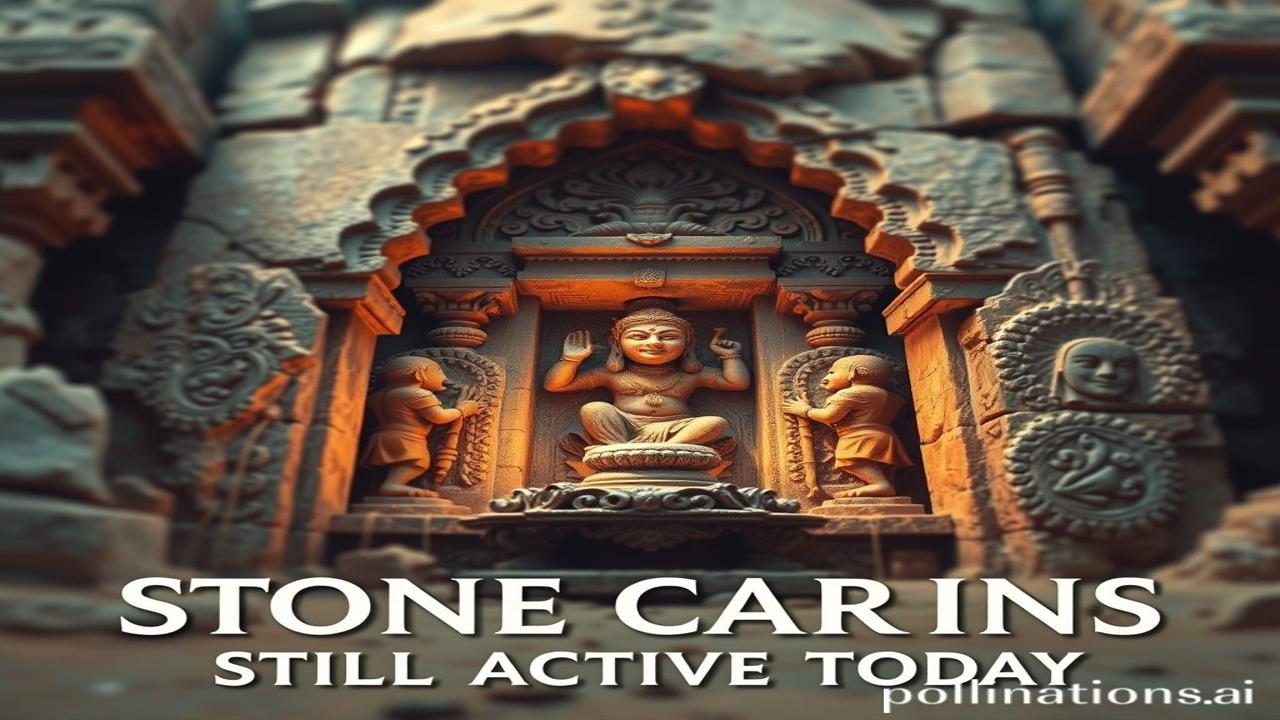Patthar Mein Bhi Bolti Kahaniyan: Stone Carving Traditions Still Alive Today
Kabhi aankhen band karke socho, kisi purane mandir ke bahar khade ho. Dhup chadh rahi hai, aur garam hawa mein chandan aur phoolon ki mehak hai. Mandir ki deewaron par bani murtiyon ko dekho. Woh patthar hain, par unme kitni zindagi hai…kitni kahaniyan. Unko chhukar dekho…kya ehsaas hota hai? Un पत्थरों me chhupi hai hamari dharohar, hamari pehchaan… Aaj bhi woh bolti hain.
Kya Hai Yeh Patthar Kala? A Glimpse into the Past
Stone carving, ya pathar mein नक्काशी karna, sirf ek hunar nahi hai. Ye to ek zinda bhasha hai, jo sadiyon se chali aa rahi hai. Imagine, from the intricate sculptures of Khajuraho, dating back to the Chandela dynasty around the 10th-12th centuries, to the colossal monoliths of Mahabalipuram carved during the Pallava dynasty in the 7th-8th centuries, India has always had a profound relationship with stone. Yeh sirf aesthetics ki baat nahi thi; it was about telling stories, preserving knowledge, and worshipping the divine. Is कला mein shamil tha shakti – taakat apni bhavnaon ko pathhar mein utaar dene ki.
Zameeni Sach: Kala Mein Zinda Log, Zindagi Kala Mein
Socho, ek moortikar – let’s call him Ramlal – apni chheni aur hathode ke saath. Subah se sham tak, woh pathhar ko आकार dete hain. Unki उंगलियाँ patthar ki हर लकीर ko महसूस karti hai, jaise woh ek raaz jaan rahe ho. Unke dada aur par-dada bhi yehi kaam karte the. Yeh unka pesha hi nahi, unki parampara hai.
Imagine Ma Rukmini, who comes to the temple every day, offering flowers and lighting diyas. She believes that the sculptures are not just stone; they are living deities, protectors of her village. She sees the Bhagavad Gita etched in stone, the Ramayana come to life. Yeh patthar unki aastha ka adhaar hai.
“Beta, pathhar bhi bolta hai,” Ramlal once told his grandson, “Bas use sunne ki der hai. Dil se sunoge toh woh apni kahani khud batayega.”
Dharohar Aur Pehchaan: Stone Carving in Today’s India
Aaj bhi, Bharat mein stone carving zinda hai. South India ke mandiron mein aaj bhi नई मूर्तियाँ banti hain. Rajasthan mein, sand-stone ke jharokhe aur balconies aaj bhi houses ko sajate hain. Varanasi mein, Ganga ghaton par pathhar ka kaam aaj bhi dekhne ko milta hai.
We see it in:
- Architecture: Modern buildings incorporating traditional designs.
- Festivals: Idols made for Ganesh Chaturthi, Durga Puja.
- Handicrafts: Small stone idols and decorative items sold in markets.
Yeh kala, yeh Bharatiyata, hamari pehchaan ka ek important hissa hai. Yeh hume yaad dilati hai ki hum kitne purane aur kitne rich hain.
Majedar Tathya Ya Bhram-Bhanjak: The Truth Behind the Stone
Log samajhte hain ki stone carving sirf mandiron mein hoti hai, lekin asli sach yeh hai ki yeh gharon, palaces aur everyday objects mein bhi milti hai. Think about the stone pestles and mortars ( sil-batta) used in many Indian kitchens even today! Yeh bhi ek tarah se stone carving ka zinda misaal hai.
Another misconception is that stone carving is a dying art. While it faces challenges like lack of funding and skilled artisans, there are dedicated individuals and organizations working to revive and preserve this beautiful tradition.
Drishya Aur Bhavnayein: Feeling the Stone
Socho, Mandir ke andar ki hawa, agarbattiyon aur ghee ki मीठी mehak se bhari hui hai. Pathhar ki deewar thandi aur chikni lagti hai. Ghantiyon ki awaaz aur bhajan ki dhun se पूरा माहोल गूंज रहा hai. Jo moortiya bani hui hai, unhe dekhkar aisa lagta hai jaise woh zinda hain, jaise woh humse baat kar rahi hain. In दृश्य aur bhavnao ka sammelan hi is art form ko itna special banata hai.
Antim Vichar Ya Uddharan: The Echo of Time
“Yadi tumne pathhar mein jeevan nahi dekha, toh tumne jeevan mein kuch nahi dekha.” – An Original Observation
Stone carving is more than just art. It is a connection to our ancestors, a reflection of our beliefs, and a testament to the enduring power of human creativity. Let’s appreciate and support these traditions, so that the stories etched in stone continue to inspire future generations. Jai Hind!
